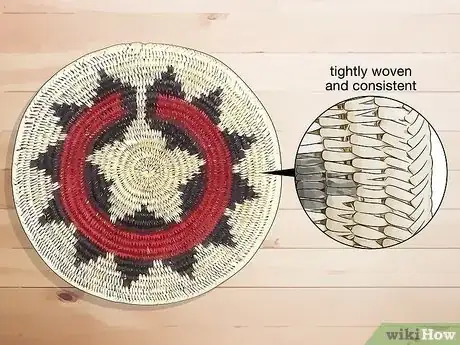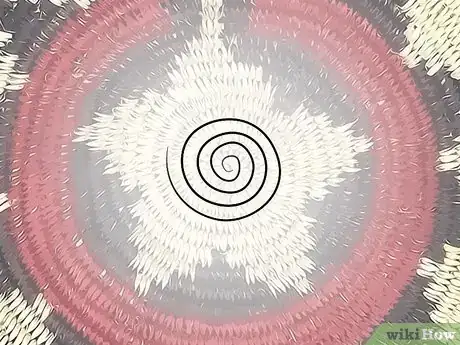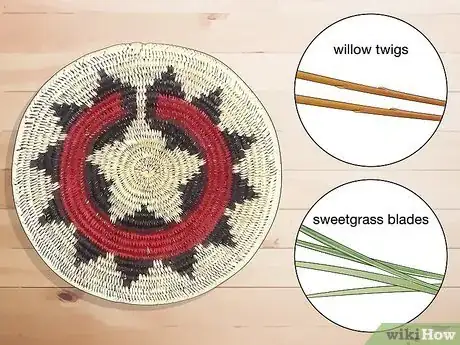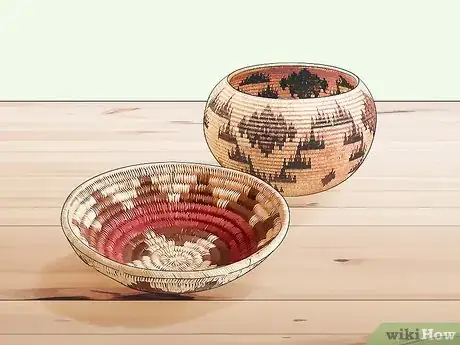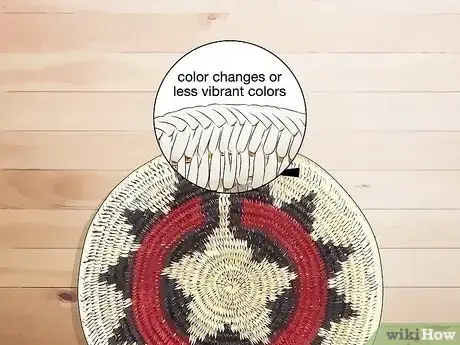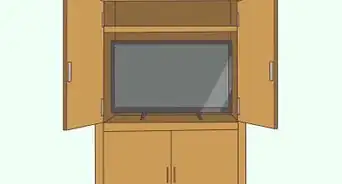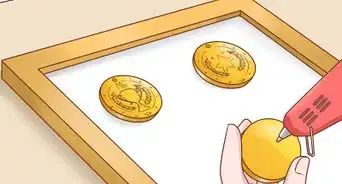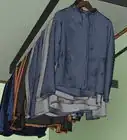This article was co-authored by wikiHow Staff. Our trained team of editors and researchers validate articles for accuracy and comprehensiveness. wikiHow's Content Management Team carefully monitors the work from our editorial staff to ensure that each article is backed by trusted research and meets our high quality standards.
This article has been viewed 9,182 times.
Learn more...
The Navajo are a Native American people who are known for creating durable and unique items such as baskets. They use these baskets to store and carry food, trade, or even carry out wedding ceremonies. There are several signs that indicate a Navajo basket is authentic. By looking at the weaving, colors, and feel of the basket, you'll be able to figure out if the basket is real or not.
Steps
Checking the Weaving and Design
-
1Make sure the basket’s stitches are tightly woven and consistent. An authentic Navajo basket will be tightly woven with consistent and even stitching. If you’re looking at a basket that’s loosely woven and has lumpy stitches, it’s not the Navajo quality you’re looking for.[1]
-
2See if the basket has a Herringbone finish on the rim. A Herringbone finish is when the strands of material are woven onto the rim in an overlapping pattern that looks like a bunch of braided ‘V’s. If you see a basket that has this pattern and the finish is tightly woven and even, it might be a Navajo basket.[2]
- Look up examples of a Navajo basket Herringbone finish if you’re still not sure exactly what it looks like.
Advertisement -
3Examine the basket to see if it was made by coiling. If the basket is coiled, it’ll have a knot in the middle where it was started with the coil running in circles stemming from the center. This is called the two-rod and bundle technique and was the most popular method for making Navajo baskets.[3]
- Later the Navajo moved on to using a three-rod bundled formation to weave the baskets.
- Other tribes might have used techniques like twining (weaving the materials in and out of one another) or plaiting (which uses wider materials).
-
4Look for a geometric design on the basket to indicate it's Navajo. Many Native American tribes used geometric shapes and designs to create their baskets, and that's especially true for the Navajo people. Look for triangles, squares, diamonds, and other shapes in a geometric or zig zag pattern to show that the basket might be theirs.[4]
- These patterns often stem from a circular pattern and move around the basket evenly starting from the center.
- Apache baskets also have triangular patterns but tend to have figures on theirs too.
-
5Check that the basket’s design is symmetrical and even. Look carefully at the pattern on the basket. The Navajo people are known for being very detailed in their design of each basket, so if you notice a diamond doesn’t look quite the same as another diamond next to it on the basket or that the patterns aren’t equal, you might not be looking at a true Navajo basket.[5]
Inspecting the Basket’s Colors, Shape, and Feel
-
1Look for natural colors in the basket that indicate it’s authentic. The Navajo use more natural colors to make their baskets like tan, white, and black tones. They also add reds to their baskets using dye to help make any designs stand out and add some color. If you’re noticing a basket that is full of bright colors like yellows, blues, oranges, or greens, this likely isn’t a Navajo basket.[6]
- The center of the basket is almost always light-colored.
- It’s common for Navajo wedding baskets to have reds in them.
- For example, Tohono O'odham baskets often have black, red, white, and green in them, which makes them different from the Navajo baskets.
-
2Make sure the basket is made out of natural fibers. The Navajo made their baskets out of things like willow twigs and sweetgrass blades. Inspect the basket to see what type of material it’s made out of—if it looks like it’s made from something other than a natural material, it’s likely not a Navajo basket.[7]
- The baskets can also be made of sumac or yucca.
- Sweetgrass grows very tall and has a sweet smell while willow twigs are bendable but sturdy branches that come from a willow tree.
- It's common for Apache baskets to be made of willow and Tohono O'odham baskets to be made from yucca root too.
-
3Identify circular baskets in all sizes showing what the Navajo used them for. While Navajo baskets come in many different sizes depending on their purpose, they tend to all have a circular shape. There might be a large water jug, medium-sized round tray, or small bowl that were all created by coiling. Look at the basket and try to determine it's purpose to help you decide if the Navajo would have made and used it.[8]
- The bigger the basket, the more expensive it will likely be.
- Baskets for wedding ceremonies were roughly 12–15 in (30–38 cm) wide.
-
4Inspect the basket for any signs of oxidation. If a Navajo basket is authentic, it’ll likely show age. Look to see if the basket has changed color due to oxidation, which might show up in signs like yellowing stitching or less vibrant colors.[9]
- The basket might even be slightly dusty but still in good condition.
- Oxidation happens when something is exposed to the air for a long period of time.
-
5Feel the basket for signs of wear. If a basket is authentic, it’ll likely be fairly old and worn. Feel the basket with your fingers to test for smoothness or look for signs that the basket has been used frequently in the past.[10]
References
- ↑ https://www.lamag.com/theclutch/spot-authentic-native-american-crafts/
- ↑ http://www.nativetech.org/basketry/coilback.html
- ↑ http://www.nativetech.org/basketry/coilback.html
- ↑ http://www.survivorlibrary.com/library/indian_basket_weaving_1903.pdf
- ↑ https://www.youtube.com/watch?v=i9if2T-J7zY#t=32s
- ↑ https://www.youtube.com/watch?v=iCt8_fWQS7Y#t=39s
- ↑ http://www.nativetech.org/basketry/coilback.html
- ↑ http://www.nativetech.org/basketry/coilback.html
- ↑ https://www.youtube.com/watch?v=5pxN56l1VCQ#t=1m32s
